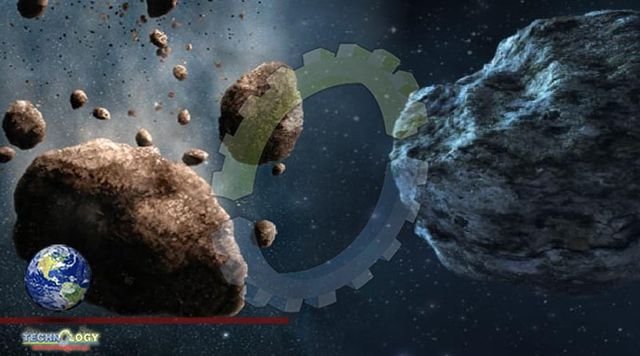There are almost 30,000 known asteroids according to the Center for Near Earth Studies. While few pose an immediate threat, there is a chance one of significant size could hit the earth and cause catastrophic damage.

When asteroid 2019 OK suddenly appeared barreling toward Earth on July 25, 2019, Luisa Fernanda Zambrano-Marin and the team of astronomers at the Arecibo Observatory in Puerto Rico quickly sprang into action. After receiving an alert, the radar scientists zoned in on the asteroid, which was approaching from Earth’s blind spot — solar opposition. Zambrano-Marin and the team had just 30 minutes to collect as many radar readings as they could. The asteroid was traveling so fast, that’s all the time she’d have it in Arecibo’s sights. University of Central Florida (UCF) manages the Arecibo Observatory for the U.S. National Science Foundation under a cooperative agreement. Because the asteroid appeared to come out of nowhere and was traveling so fast, it made headline news.
Zambrano-Marin’s findings were published on June 10 in the Planetary Science Journal, just a few weeks before the world observed Asteroid Day, which is June 30, and promotes global awareness to help educate the public about these potential threats. “It was a real challenge,” says Zambrano-Marin, a UCF planetary scientist. “No one saw it until it was practically passing by, so when we got the alert, we had very little time to act. Even so, we were able to capture a lot of valuable information.” It turns out the asteroid was between .04 and .08 miles (.06 and .13 km) in diameter and was moving fast. It was rotating at 3 to 5 minutes, which means it is part of only 4.2 percent of the known fast rotating asteroids. This is a growing group that scientists say needs more attention.
According to the data, the asteroid is likely a C-type, which are asteroids made up of clay and silicate rocks, or S-type, which are composed of silicate and nickel-iron. C-type asteroids are among the most common and some of the oldest in our solar system. S-type are the second most common. To continue her investigation, Zambrano-Marin is currently inspecting the data acquired by Arecibo’s Planetary Radar database. Despite the fact that the observatory’s telescope collapsed in 2020, the Planetary Radar team will be able to use the current data bank, which covers four decades. Science operations in the areas of space and atmospheric sciences continue, and the personnel is refurbishing 12-meter antennas to continue astronomical research.
Source: This news is originally published by scitechdaily